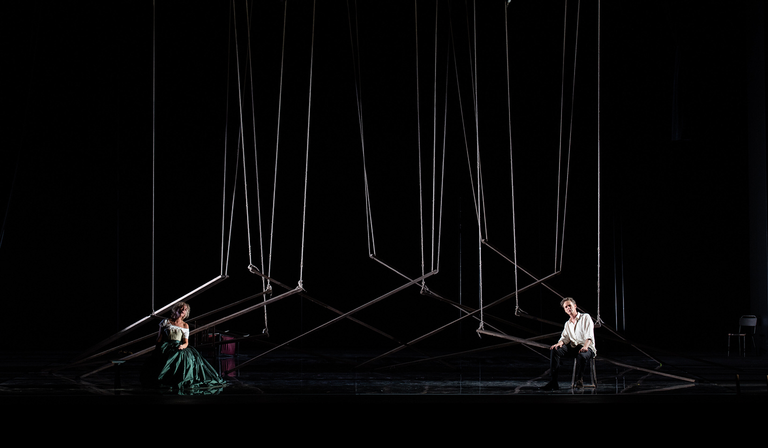I first came to Italy 43 years ago, in my nine months off between school and university, and it was an epiphany, if not one quite on the scale of Stendhal’s. Visiting Florence for the first time in 1817, he developed what subsequently became known as “Stendhal syndrome”:
Absorbed in the contemplation of sublime beauty… I reached the point where one encounters celestial —sensations… Everything spoke so vividly to my soul. Ah, if I could only forget. I had palpitations of the heart, what in Berlin they call ‘nerves’. Life was drained from me. I walked with the fear of falling…
I and my companion, a schoolfriend, did at least manage to stay upright, despite underfeeding (I remember trying to fill up on copious quantities of parmesan sprinkled onto the gum-lacerating bread in the restaurants, much to the waiters’ astonishment); and we went on from Florence to Rome where I (an Anglican) and he (a Roman Catholic) relitigated vigorous Reformation debates about the power and the glory, faced as we were by the overwhelming vastness of St Peter’s.
Coming to Rome again to rehearse for nine weeks has jostled all my dormant Roman memories to the forefront of my brain, but I’ve been reminded of unexpected things too. Taking a walk around the Forum one evening, I ended up looking at the Arch of Titus, a stony testament to the sheer historical depth of the wounds which have been given and received in Palestine. The Arch, built in 81 AD by the Emperor Domitian, celebrates his predecessor Emperor Titus’s suppression of the First Jewish Revolt, his destruction of the Jewish state and sacking of Jerusalem. Its marble reliefs include the depiction of items looted from Temple of Herod.
♦♦♦
Titus is the hero of Mozart’s penultimate opera, La clemenza di Tito, or The Clemency of—one might give a hollow laugh in front of the arch that bears his name—Titus. I’ve never performed the opera, but I was once supposed to, and part of the story of how I didn’t came upon me here in Rome. It was to have been a concert performance at the Edinburgh Festival with the late Charles Mackerras (we’d already done Mozart’s other great opera seria, Idomeneo, together at Edinburgh). At the first rehearsal, he started needling me about my Italian pronunciation. I hotheadedly rose to the bait and stomped off, never to return. I’d forgotten that the wonderful mezzo Christine Rice witnessed this sorry spectacle. She’s in Rome now, playing Miss Jessel to my Peter Quint in Britten’s opera of Henry James’s The Turn of the Screw. She filled in the dots and told me that, after I’d left, an awkward silence was followed by Charles observing, with his residual Australian inflection, “Tito è… partito.”
♦♦♦
Early in his career, Mackerras had collaborated closely with Britten, conducting performances of, for instance, The Turn of the Screw. I first played the ghostly Quint in Deborah Warner’s legendary production for the Royal Opera, at the Barbican Theatre back in 1997. Charles came, and I’ll never forget him complaining that my Quint wasn’t “spooky” enough. If you look at the production photographs from the original English Touring Opera production of the 1950s, you can see where he was coming from.
Coming back to The Turn of the Screw with the same director in Rome, after a gap of a quarter of a century, is in itself an uncanny experience. I find that my body is still encoded with the inertial sensations of predatory circlings and swift descents downstage. My mind still bears the grooves.
The plot—Britten’s as much as James’s—is replete with ambiguity and mystery. On the surface, it is indeed a spooky ghost story. A governess is sent by the uncle/guardian of two orphaned children to look after them at his country estate, Bly. The guardian wants no worry; the governess is to take sole charge and not bother him. At first, she finds the children almost impossibly charming; by the end of the tale, she has becomes convinced that they are possessed by the spirits of two dead servants, the valet Quint and the previous governess, Miss Jessel. The boy, Miles, dies in her arms as she pressures him to admit to Quint’s ghostly presence.
Ghost story, yes. But it’s also a story about the corruption of innocence and the danger of drawing conclusions. The governess is tautly balanced on the edge of hysteria, ready to think the worst. At the same time, the children have been witnesses, somehow, to the sexual relationship between Quint and Jessel. It’s a phantasmagoric take on James’s What Maisie Knew, written the previous year. After all, young Maisie witnesses the goings on of her divorced parents and their new partners with an “innocence saturated with knowledge”.
♦♦♦
Many things were the same this time around as in the original Warner production. The extraordinary lighting by Jean Kalman. The installation at the beginning of Act 2: a pile of desolate scaffolding planks slowly raised by ropes which randomly unfurl, conjuring a labyrinth for the governess to be lost in, and then swinging upright as the church bells sound. This is poetic theatre whose spookiness resonates far more troublingly than the run of the mill sort.
Contexts shift, though. This time, the dynamic between Quint and Jessel was, to one audience member at least, a reminder of that between Jeffrey Epstein and Ghislaine Maxwell.













